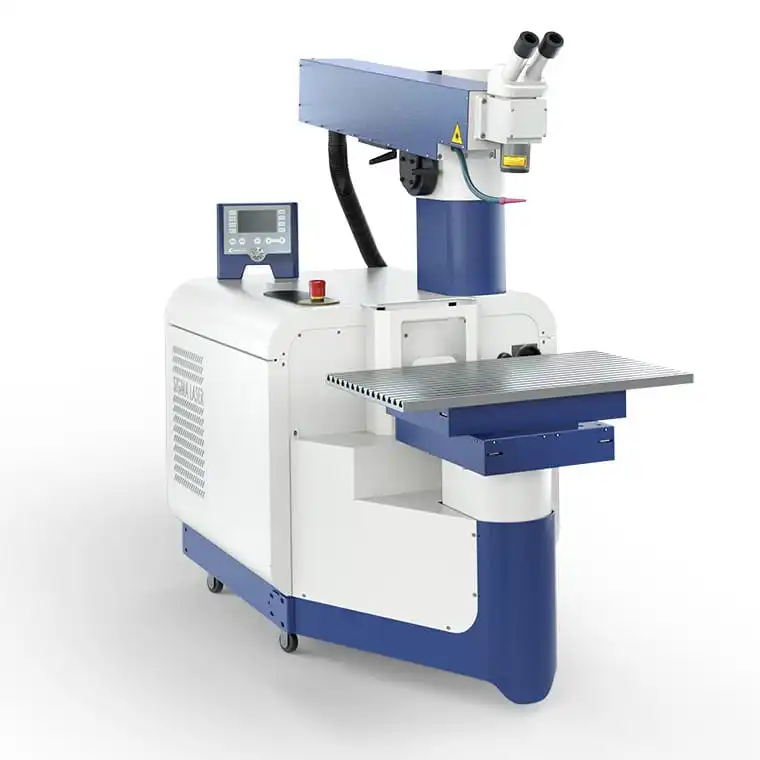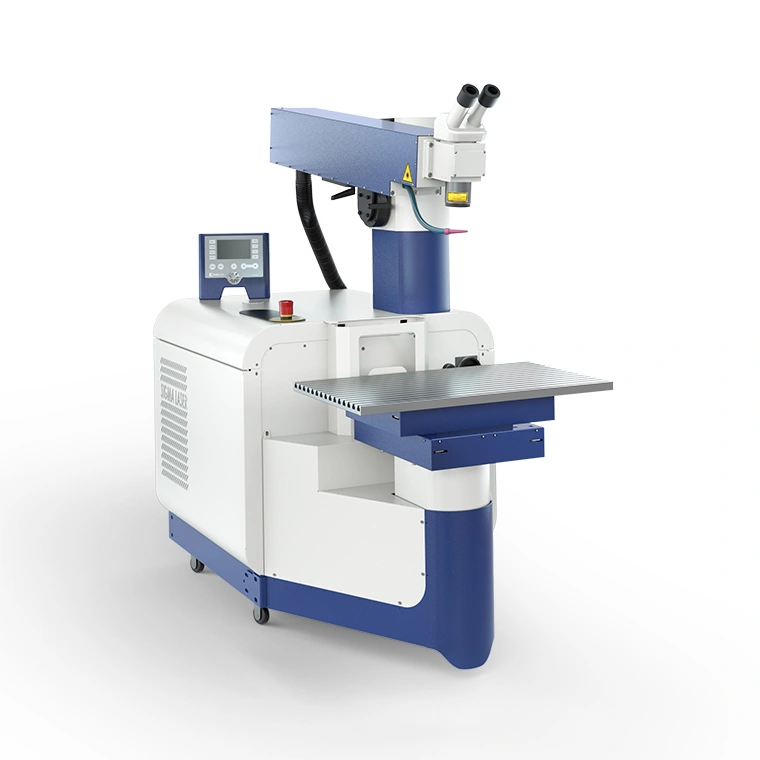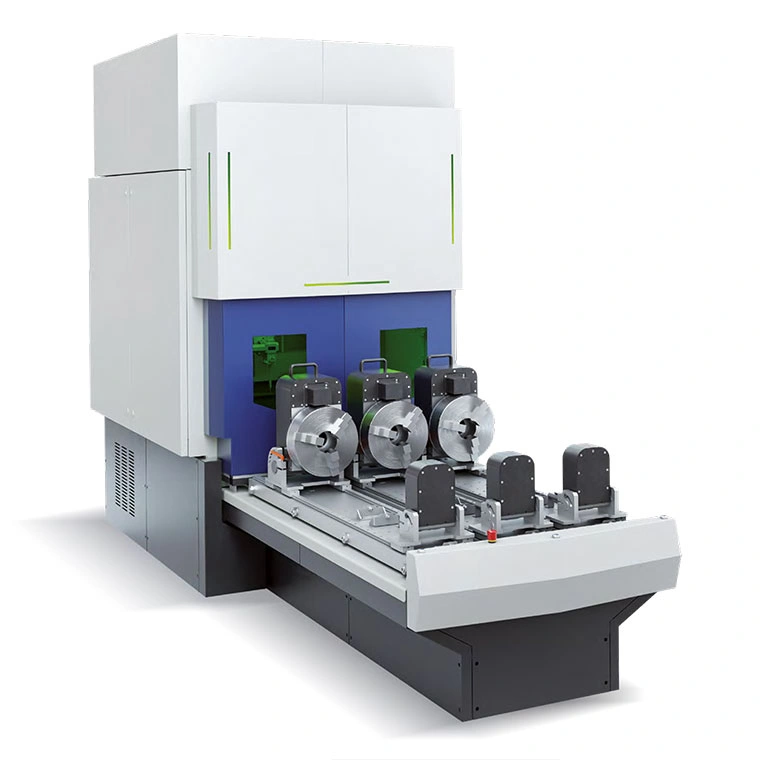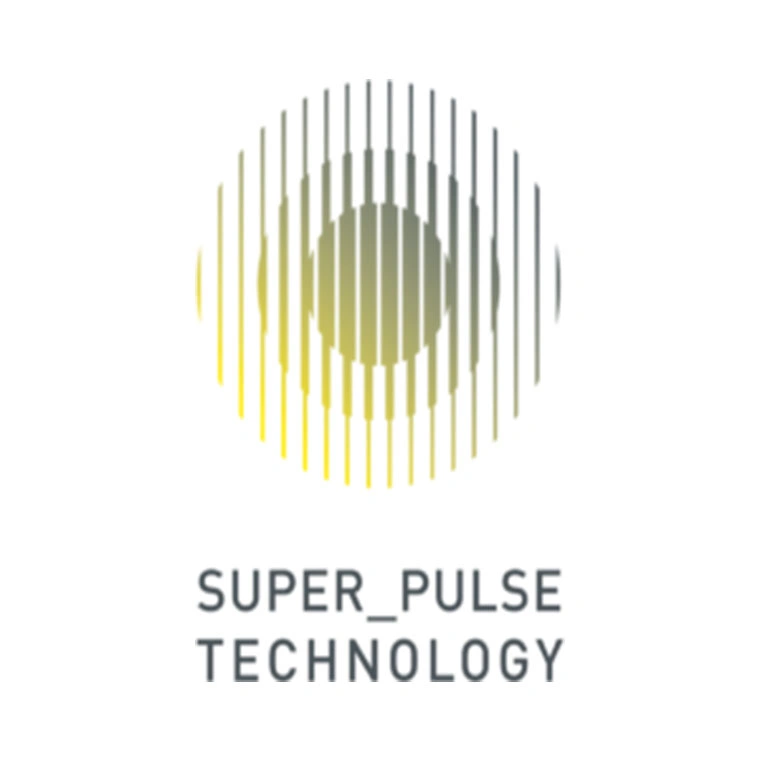Advanced Laser Welding Solutions for Aerospace Industry
Precision. Strength. Flight-Ready.
Empower your aerospace manufacturing with Sigma Laser’s advanced laser welding solutions—engineered for extreme performance and uncompromising quality.
Recommended Laser Welding Systems for Aerospace Applications
When it comes to aerospace manufacturing, precision, repeatability, and adaptability are critical. Sigma Laser offers a tailored range of laser welding systems that align perfectly with the demanding standards of the aerospace industry. Below are our top recommendations:
Sidanus Light
Why it’s recommended:
- Offers high precision and control for complex parts such as turbine blades or engine components.
- Integrated 4-axis motion (X, Y, Z, C) ensures flexibility in welding around curves and edges.
- Ideal for both R&D labs and production floors due to its modular, customizable design.
Key Advantages:
- Multi-axis control
- Seamless integration with aerospace jigs and fixtures
- Stable and repeatable weld quality
Sidanus Fibre
Why it’s recommended:
- Best suited for high-speed welding of reflective aerospace materials like aluminum and titanium.
- Fiber laser source provides deeper penetration with lower heat distortion.
- Excellent for structural parts, brackets, and housings.
Key Advantages:
- High energy efficiency
- Fast cycle times for mass production
- Minimal post-processing required
Sigomatic Pro
Why it’s recommended:
- Designed for high-throughput environments like aerospace component assembly lines.
- Features remote diagnostics and repeatable CNC-driven accuracy for critical part welding.
- Can be integrated into Industry 4.0 production systems.
Key Advantages:
- Automation-ready
- 24/7 production capability
- Consistent, high-precision results across batches
Simass Slide
Why it’s recommended:
- Perfect for medium-size aerospace parts and assemblies that require both flexibility and accuracy.
- Enables manual or semi-automatic welding with quick part loading/unloading.
- Excellent option for pilot production runs or mixed-batch manufacturing.
Key Advantages:
- Cost-effective setup
- User-friendly operation
- Adaptable to different aerospace components
Super Pulse Technology (SPT)
Advanced pulsed welding mode (available in various systems)
Why it’s recommended:
- Ensures low heat input for thin-walled aerospace parts and sensors.
- Reduces risk of microcracks or deformation in sensitive materials.
- Ideal for instrument enclosures, sensor housing, and electronic module welding.
Key Advantages:
- High pulse peak power
- Exceptional weld aesthetics
- Minimal heat-affected zone (HAZ)
From lightweight structural components to highly sensitive sensor housings, Sigma Laser systems offer a scalable and efficient solution for every aerospace welding challenge. Whether you need high-speed automation, micro-precision, or material-specific performance, there’s a Sigma Laser model designed to meet your needs.
Have Questions? We’re Here to Help!
Speak with our specialists to explore the best laser welding systems for your specific industry challenges:
ApplicationsKey Use Cases in Aerospace Manufacturing
In aerospace manufacturing, every weld matters. From the integrity of fuel systems to the aerodynamic performance of lightweight structures, precision is not optional—it’s mission-critical. Laser welding has emerged as the technology of choice for modern aerospace production, enabling manufacturers to meet the sector’s demanding requirements with consistency and efficiency.
Turbine Blade and Engine Part Welding
Laser welding allows for high-strength joins in heat-resistant alloys like Inconel and titanium, ensuring durability under extreme temperatures and stresses.
Fuel System & Hydraulic Components
Fine-tuned control ensures leak-free, reliable welds in complex piping and valve assemblies, essential for flight safety.
Electrical Enclosures and Sensors
Hermetically sealed welds for sensitive avionics and instrumentation to protect against vibration, moisture, and pressure changes.
Aircraft Body & Structural Frame Components
Clean, low-distortion welds on aluminum and other lightweight alloys reduce overall weight while maintaining structural integrity.
Spacecraft Modules & Satellite Assemblies
Laser precision ensures microscale alignment and ultra-clean joints—vital for space-bound systems where rework is not an option.
Summary: Unlocking New Possibilities with Laser Welding in Aerospace Manufacturing
Whether you’re building next-generation aircraft or interplanetary systems, laser welding provides the precision and reliability your designs demand. Sigma Laser systems are engineered to tackle these critical use cases with unmatched control, efficiency, and repeatability—ensuring your aerospace components are ready for takeoff.
Choosing the Right Laser Welding System for Aerospace Applications
Selecting the ideal laser welding system for aerospace manufacturing involves evaluating a range of technical and operational requirements. Due to the complexity of aerospace components and the high standards for safety and performance, the choice of laser system must align with material properties, part geometry, and production volume.
1. Consider the Material Type
Aerospace components often use materials such as aluminum, titanium, stainless steel, and advanced alloys.
- For reflective or lightweight materials (e.g., aluminum, titanium), fiber lasers are preferred due to their high absorption efficiency.
- For joining dissimilar or coated materials, pulsed lasers or hybrid systems offer better control and reduced risk of cracking.
2. Precision and Heat Control Requirements
If the parts are delicate or require minimal heat input, pulsed laser systems or Super Pulse Technology (SPT) from Sigma Laser ensure clean, micro-precision welds without damaging sensitive areas or nearby electronics.
3. Part Complexity and Geometry
For multi-axis components such as turbine blades, actuator housings, or curved assemblies:
- Choose systems with 4-axis (X, Y, Z, C) motion capabilities, like Sidanus Light or Sidanus Fibre.
- Swivelling Y-axis and Motor-driven Z-axis features enable access to hard-to-reach weld points and intricate angles.
4. Production Volume and Automation
For high-volume manufacturing or repetitive tasks:
- Opt for systems with full CNC automation and remote diagnostics, such as the Sigomatic Pro.
- These features reduce downtime, ensure consistent weld quality, and support integration into larger production lines.
5. Environmental and Safety Compliance
Ensure your laser system complies with aerospace-grade safety standards. Sigma Laser systems include sealed enclosures, protective shielding, and real-time monitoring systems to meet the most rigorous industrial and environmental safety protocols.
Summary:
Choosing the right laser welding system for aerospace involves matching advanced laser technology to your specific material, geometry, and production needs. Sigma Laser offers a diverse portfolio of systems engineered to meet the exacting demands of the aerospace industry—with precision, reliability, and automation at the core.
The aerospace industry demands the highest levels of precision, reliability, and performance—often under extreme conditions. Whether in aircraft, spacecraft, or satellite systems, every component must meet rigorous quality and safety standards. That’s where laser welding technology proves indispensable.
Laser welding offers an exceptional combination of accuracy, speed, and low thermal distortion, making it ideal for assembling intricate aerospace parts such as turbine components, fuel systems, electrical enclosures, and lightweight metal structures. Unlike traditional welding methods, laser technology ensures minimal heat-affected zones, allowing for cleaner joins and less material stress—an essential requirement for high-performance aerospace engineering.
At Sigma Laser, we specialize in delivering advanced laser welding systems tailored to the stringent requirements of the aerospace sector. Our solutions enable manufacturers to produce lightweight, durable, and complex assemblies while maintaining tight tolerances and boosting overall productivity. Whether you’re building for the skies or beyond the stratosphere, our machines help you weld with confidence, consistency, and control.
Let’s explore how laser welding is transforming aerospace manufacturing, and how Sigma Laser is at the forefront of this evolution.
Why Choose Laser Welding for Aerospace Manufacturing?
In aerospace manufacturing, precision, strength, and material integrity are non-negotiable. Whether you’re producing turbine components, fuel systems, or lightweight structural assemblies, the welding method you choose plays a critical role in ensuring safety, performance, and compliance with rigorous aerospace standards.
Traditional joining techniques—such as arc welding or resistance welding—often fall short when it comes to handling complex geometries, dissimilar materials, and the extreme service conditions of aerospace environments. These conventional methods can introduce unwanted heat distortion, create weak joints, and require extensive post-processing, all of which can jeopardize structural integrity and certification compliance.
In contrast, laser welding has emerged as a preferred technology for both manufacturing and maintenance of aerospace components. With its high precision, low heat input, and ability to handle high-performance alloys like titanium, Inconel, and aluminum, laser welding enables manufacturers to meet the industry’s most demanding requirements—without compromising on strength, accuracy, or reliability.
How Laser Welding Advances Aerospace Manufacturing?
Aspect |
Conventional Methods |
Laser Welding Advantage |
Heat Input |
High thermal load causes warping and residual stress |
Ultra-localized heat minimizes distortion and preserves material properties |
Precision |
Limited control, especially on thin or complex parts |
Micron-level accuracy ideal for precision-critical aerospace components |
Material Compatibility |
Often restricted by conductivity and thickness limitations |
Works efficiently with titanium, Inconel, aluminum, and dissimilar alloys |
Post-Processing |
Requires grinding, stress relief, or extensive machining |
Minimal finishing needed, saving time and reducing material fatigue |
Access to Tight Areas |
Challenging in enclosed structures and thin-walled parts |
Focused beam reaches confined geometries and deep joints with ease |
Repeatability |
Highly dependent on operator skill |
CNC-integrated laser welding ensures high consistency across production runs |
Structural Integrity |
Risk of micro-cracks and heat-affected weaknesses |
Produces strong, fatigue-resistant joints with minimal thermal influence |
Why Aerospace Manufacturers Rely on Laser Welding?
Whether assembling a satellite frame or repairing a turbine blade, laser welding offers unmatched precision and durability. Here’s why leading aerospace companies are making the switch:
- Preserves material strength and fatigue resistance — essential in critical load-bearing parts
- Minimizes heat-affected zones — protects thin walls and sensitive coatings from degradation
- Supports a wide range of aerospace-grade materials — including titanium, Inconel, stainless steel, and composites
- Reduces post-weld processing and inspection time — speeding up production cycles
- Enables precision welding in restricted or automated environments — such as sealed chambers or robotic arms
- Improves first-pass yield and reduces rework — enhancing overall production efficiency
Laser Welding Across the Aerospace Component Lifecycle
Laser welding delivers value far beyond initial fabrication:
- In production: Ensures precision welding of fuel injectors, sensor housings, turbine parts, and structural subassemblies
- In repair: Enables restoration of high-value components like blades, seals, and nozzles without compromising integrity
- In R&D and prototyping: Speeds up development of new designs and allows testing of lightweight, high-performance alloys
Future-Proof Your Aerospace Manufacturing with Laser Welding
From engine components to satellite structures, laser welding empowers aerospace manufacturers to achieve superior performance, compliance, and innovation. Its precision, material flexibility, and automation potential make it a cornerstone of modern aerospace engineering.
Sigma Laser’s advanced welding solutions are engineered to meet the unique challenges of aerospace production, offering manufacturers the reliability and control needed to push boundaries—on Earth and beyond.
innovationsLaser Technologies Used in Aerospace Industry
Modern aerospace manufacturing demands extreme precision, reliability, and efficiency—qualities that laser technologies are uniquely equipped to deliver. The following laser solutions are widely adopted in the aerospace sector for their ability to meet stringent technical requirements and industry regulations:
Pulsed Laser Technology
Pulsed lasers deliver energy in short bursts, allowing for high-precision welding and minimal thermal distortion. These lasers are especially effective for micro-welding applications in aerospace, such as sensor housings, hermetic seals, and electronic components.
Fiber Laser Systems
Fiber lasers are renowned for their high beam quality, energy efficiency, and low maintenance. In aerospace applications, they are ideal for welding lightweight metals such as aluminum and titanium, commonly used in aircraft structures, fuel systems, and engine components.
Hybrid Laser Welding Systems
These systems combine laser welding with other techniques such as arc welding (e.g., laser-MIG hybrid) to improve weld penetration and fill capabilities. Hybrid systems are used in aerospace for welding dissimilar materials and complex geometries in engine casings and fuselage assemblies.
Advanced Laser Control & Automation Software
Integrated control software ensures repeatability, accuracy, and ease of operation—critical factors in aerospace production. Automated systems reduce human error, enable real-time quality monitoring, and optimize production efficiency in both R&D and high-volume manufacturing.
Why Sigma Laser? Key Advantages of Sigma Laser for the Aerospace Industry
The aerospace industry demands unmatched precision, reliability, and adaptability; all of which are hallmarks of Sigma Laser’s technology. Below are the key benefits that make Sigma Laser systems an ideal choice for aerospace manufacturing and repair applications.
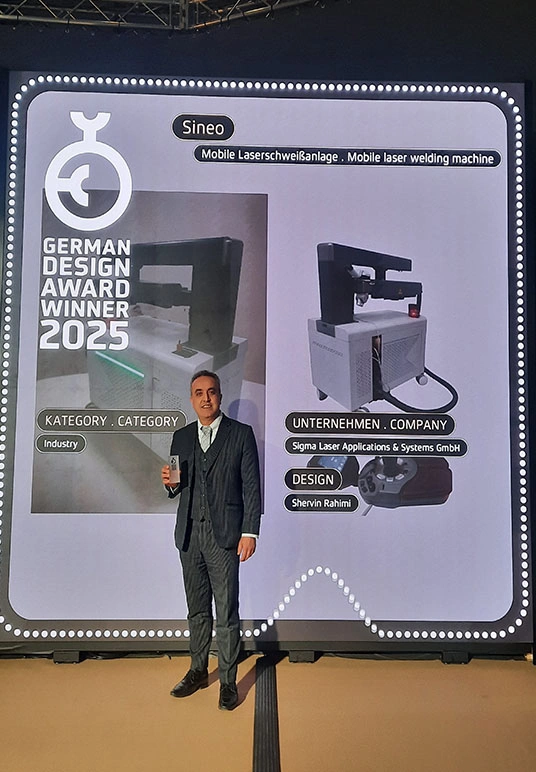
Sigma Laser systems offer high-precision welding, essential for aerospace components that demand micron-level accuracy, such as turbine blades, fuel systems, and sensor housings.
Thanks to advanced pulse control and beam shaping technologies, Sigma Lasers ensure deep, narrow welds with minimal thermal distortion—crucial for lightweight and heat-sensitive aerospace materials.
From titanium alloys and stainless steels to nickel-based superalloys, Sigma Laser systems are optimized to handle a broad range of aerospace-grade materials.
Sigma’s machines are built with full automation readiness, enabling integration into robotic cells, CNC platforms, and smart factory environments to enhance throughput and process stability.
The modular design and multi-axis control options allow easy adaptation for welding complex, curved, or hard-to-reach components often found in aerospace assemblies.
Laser welding eliminates electrode wear and contamination risks, supporting the strict quality and cleanliness requirements of aerospace manufacturing standards.
Sigma systems support inline process monitoring and real-time weld inspection tools, helping aerospace manufacturers maintain traceability and meet stringent certification protocols.
Sigma Laser machines are designed for long-term reliability and low maintenance, reducing total cost of ownership while offering high electrical and optical efficiency.
With Sigma Laser, you don’t just get a machine; you get a strategic partner.
We have worked for you
Laser Welding Workflows in Aerospace Manufacturing
In the aerospace industry, laser welding is integrated into highly structured and quality-critical manufacturing workflows. From prototype development to full-scale production, laser processes are tailored to meet the stringent requirements of safety, reliability, and regulatory compliance.
Component Preparation
Welding Process Selection
Real-Time Process Control
Post-Weld Inspection & Testing
Data Logging and Traceability
Laser welding workflows in aerospace manufacturing are carefully structured to meet the industry’s high demands for precision, safety, and traceability. From meticulous part preparation and fixturing to post-weld inspection and documentation, each step is optimized for repeatability and performance. By integrating Sigma Laser’s advanced welding systems, aerospace manufacturers can enhance process control, reduce rework, and achieve consistent, high-quality results — even in the most complex components.
Key Tips for Using Laser Technology in Aerospace Manufacturing
Adopting laser technology in aerospace manufacturing offers high precision, repeatability, and clean processing — but successful implementation depends on a few critical factors. Here are key tips to maximize performance and ensure compliance in high-stakes aerospace applications:
1. Select the Right Laser for the Material
- Titanium & Nickel Alloys: Use fiber lasers with high peak power and narrow pulse widths to reduce heat-affected zones (HAZ) and prevent micro-cracks.
- Aluminum Alloys: Use lasers with pulse shaping capabilities to manage reflectivity and avoid porosity.
2. Prioritize System Stability and Beam Quality
- Choose a laser system with stable beam output and low mode drift, especially for critical structural components that demand micron-level accuracy.
3. Automate for Precision and Repeatability
- Integrate multi-axis CNC tables, robotic arms, or gantry systems to ensure consistent weld paths — ideal for complex geometries like turbine blades or fuel system parts.
4. Use Process Monitoring & Feedback Loops
- Employ real-time sensors and vision systems to monitor melt pool behavior and detect anomalies early. Sigma Laser systems support closed-loop controls for intelligent parameter adjustment.
5. Maintain Cleanroom Standards Where Needed
- For ultra-sensitive components (e.g., satellite electronics), ensure laser welding is performed in a clean, controlled environment to avoid contamination or inclusion defects.
6. Document Everything for Certification
Keep full digital logs of welding parameters, inspection reports, and operator IDs. This supports AS9100, NADCAP, and other aerospace audit requirements.
FAQsFrequently Asked Questions about Laser Welding In Aerospace Industry
Laser welding in the aerospace industry raises many technical and operational questions due to the sector’s strict requirements. Below, we’ve answered some of the most common inquiries to help engineers, manufacturers, and decision-makers better understand the benefits, capabilities, and best practices of using laser welding in aerospace applications.
Laser welding delivers extremely precise, clean, and strong welds with minimal heat input. This is ideal for aerospace components where weight reduction, structural integrity, and heat sensitivity are critical.
Laser welding is commonly used for:
- Turbine blades and housings
- Fuel system components
- Structural brackets and fasteners
- Heat exchangers
- Lightweight frames and enclosures
- Satellite assemblies and sensors
Yes — when properly configured, laser welds can meet or exceed the mechanical strength of traditional welds while being lighter and cleaner. They are qualified under standards like AS9100, AWS D17.1, and NADCAP.
Laser welding works on titanium, Inconel, stainless steels, aluminum alloys, and specialty aerospace metals. Advanced pulse shaping helps manage reflective or thermally sensitive materials.
- Managing thermal distortion in thin components
- Welding reflective metals like aluminum
- Ensuring weld quality for certification
- Preventing porosity and inclusions
These challenges are addressed by using high-quality beam delivery systems and intelligent control software, such as those offered by Sigma Laser.
Laser welding is faster, cleaner, and more easily automated. Unlike EB welding, it doesn’t require vacuum chambers, and compared to TIG, it has a smaller heat-affected zone and higher precision.
Absolutely. With systems like Sidanus Light and Sigomatic Pro, manufacturers can go from prototype to serial production with the same machine, adjusting speed and power as needed.
Educational Resources & Related Articles
To help you deepen your understanding of laser welding applications in the aerospace industry, we offer a range of educational materials and insightful articles. These resources cover the latest trends, best practices, case studies, and technical guidance to support your manufacturing excellence:
-
Comprehensive Guide to Laser Welding in Aerospace
Explore how laser welding improves strength, precision, and efficiency in aerospace component production. -
Case Study: Enhancing Turbine Blade Manufacturing with Fiber Laser Welding
Learn how a leading aerospace manufacturer reduced defects and improved cycle time using Sigma Laser systems. -
Webinar: Overcoming Challenges in Welding Reflective Aerospace Materials
Expert insights on welding aluminum and other challenging alloys with advanced laser technology. -
Whitepaper: Automation and Quality Control in Aerospace Laser Welding
Discover how integrated software like Sigomatic Pro ensures consistent, certifiable weld quality. -
Blog Post: Comparing Laser Welding to Traditional Welding Methods in Aerospace
A detailed analysis of benefits, limitations, and cost-effectiveness. -
Technical Datasheets and Catalogs
Download detailed specs for Sigma Laser’s aerospace-ready laser welding equipment.
Feel free to explore these resources to empower your team with knowledge and optimize your aerospace manufacturing processes with cutting-edge laser technology.
Have Questions? We’re Here to Help!
Speak with our specialists to explore the best laser welding systems for your specific industry challenges:

